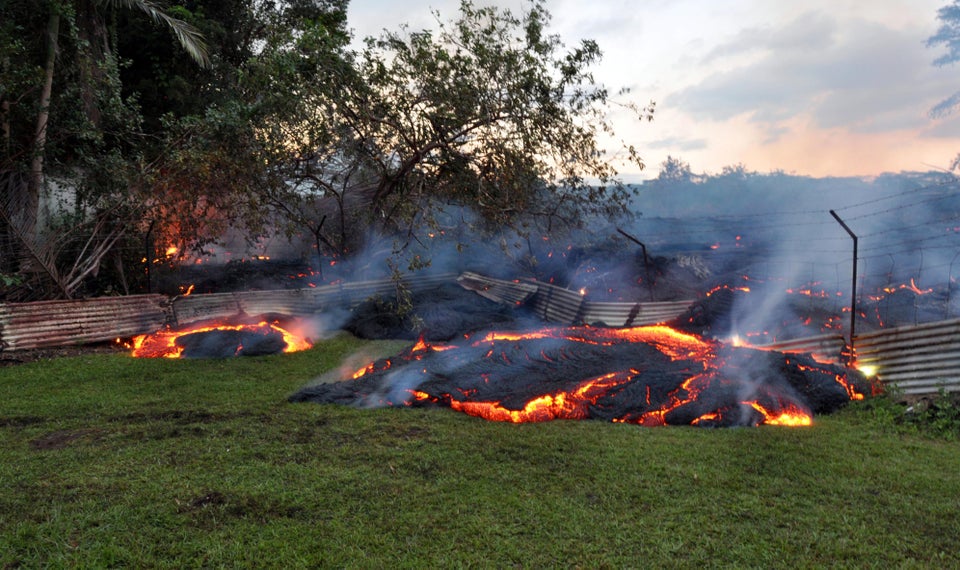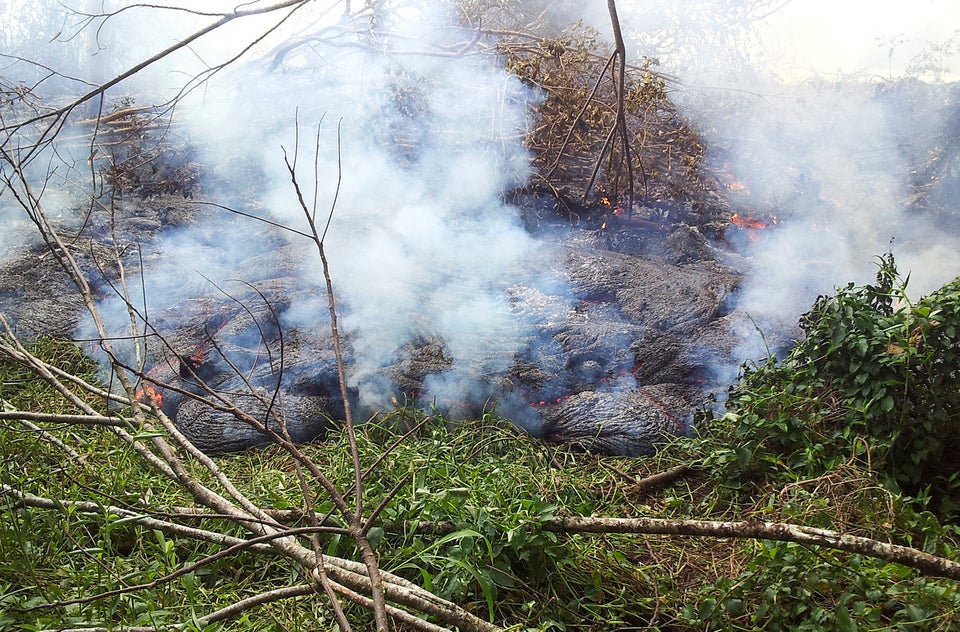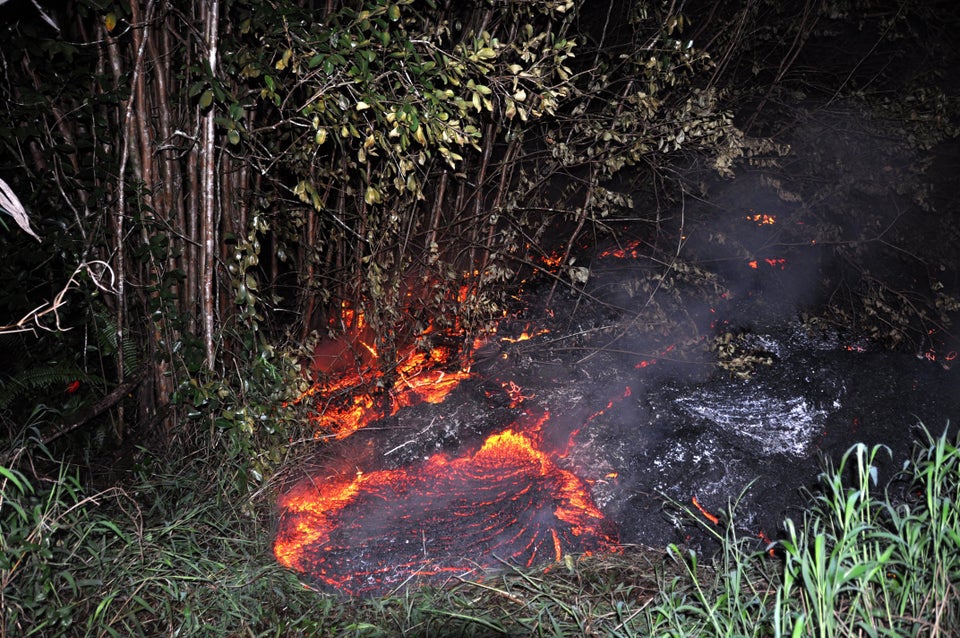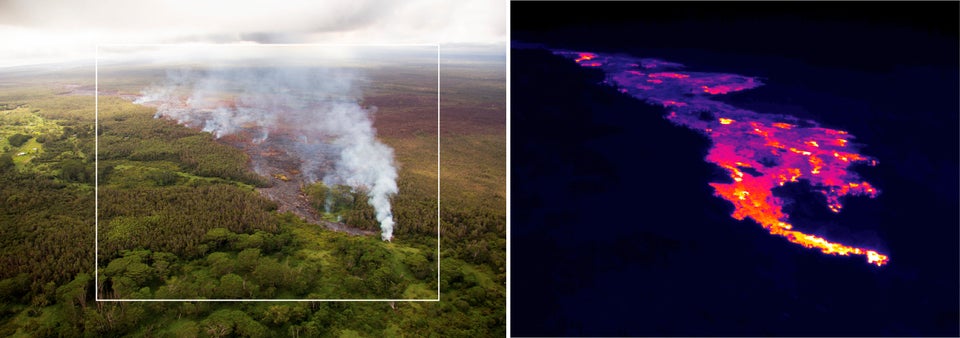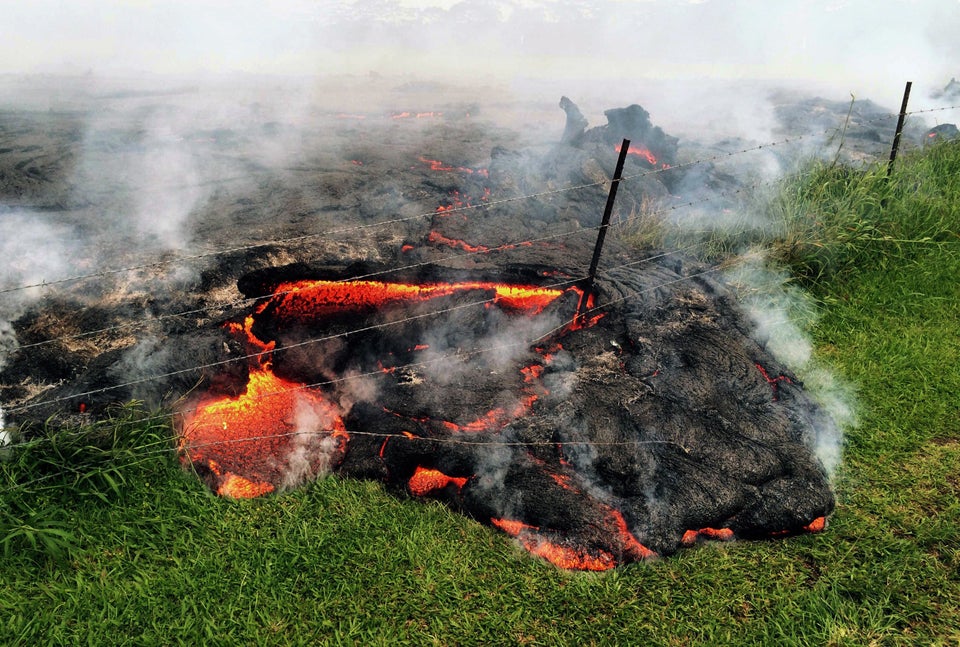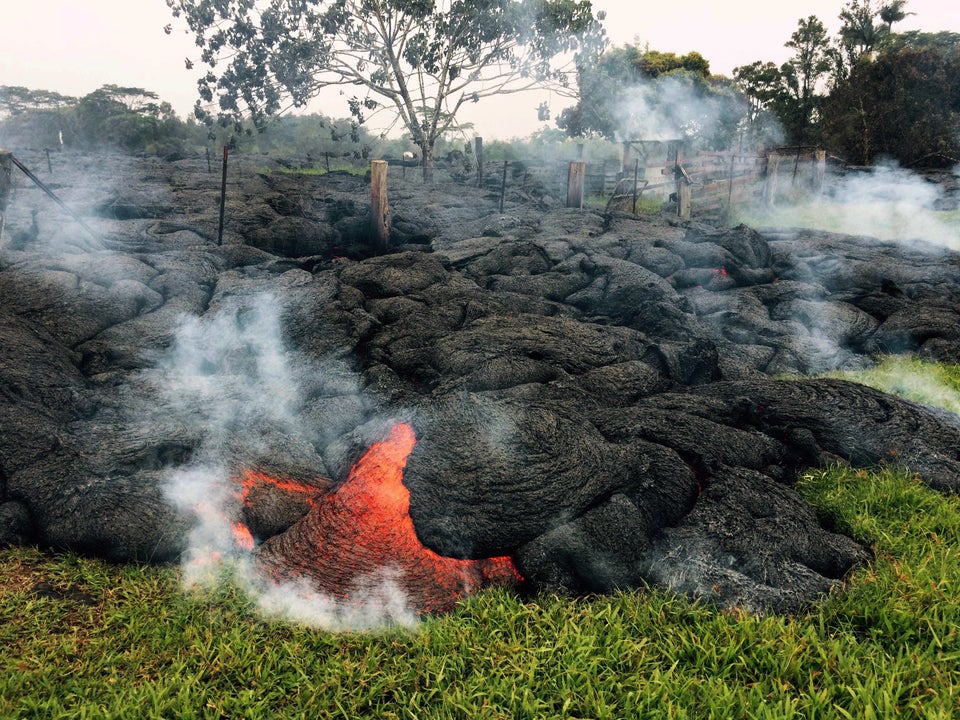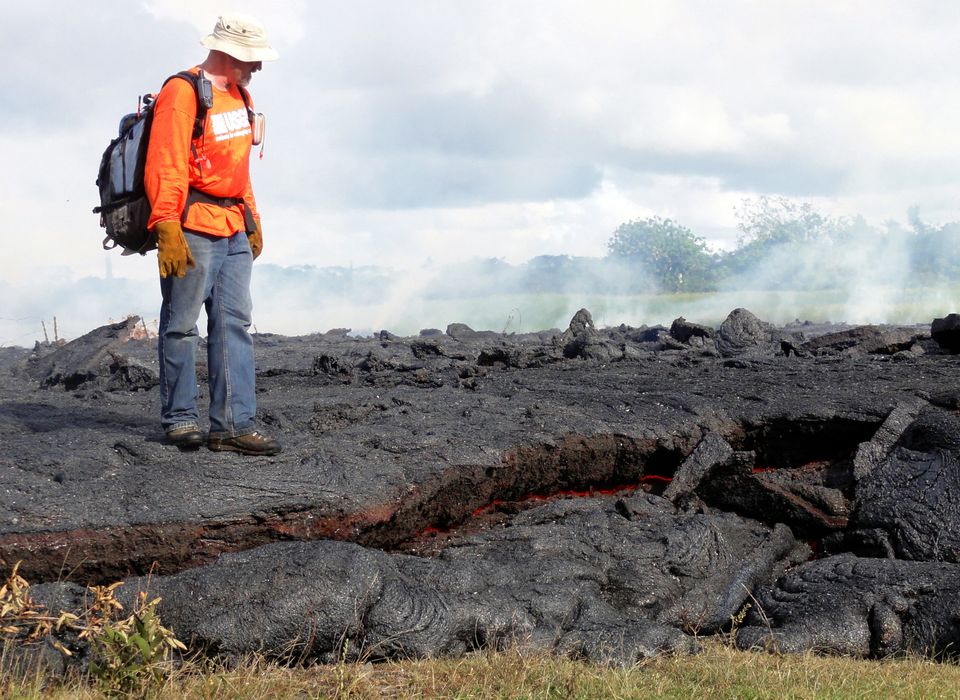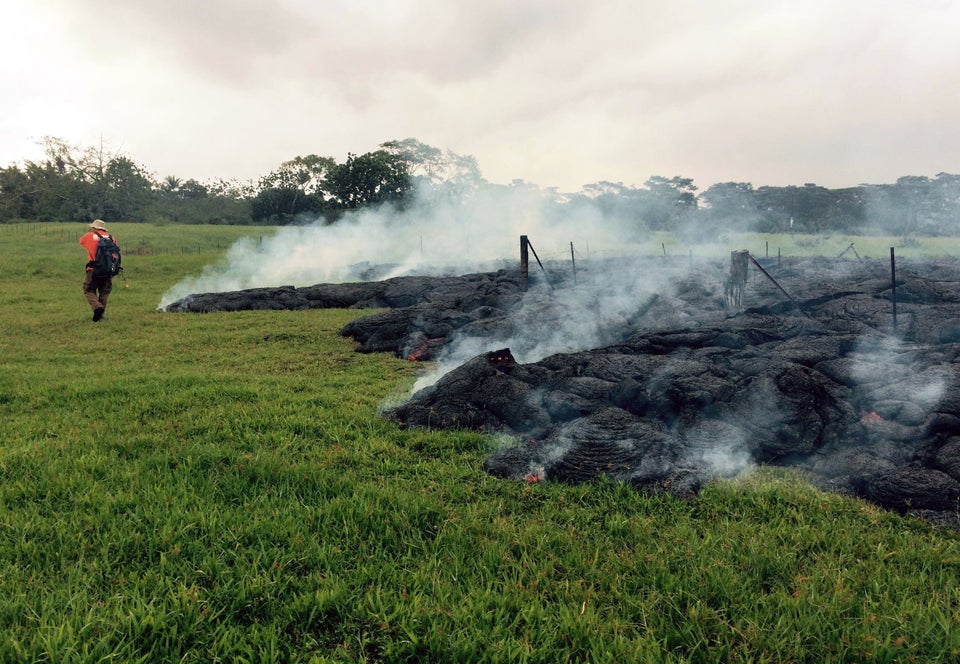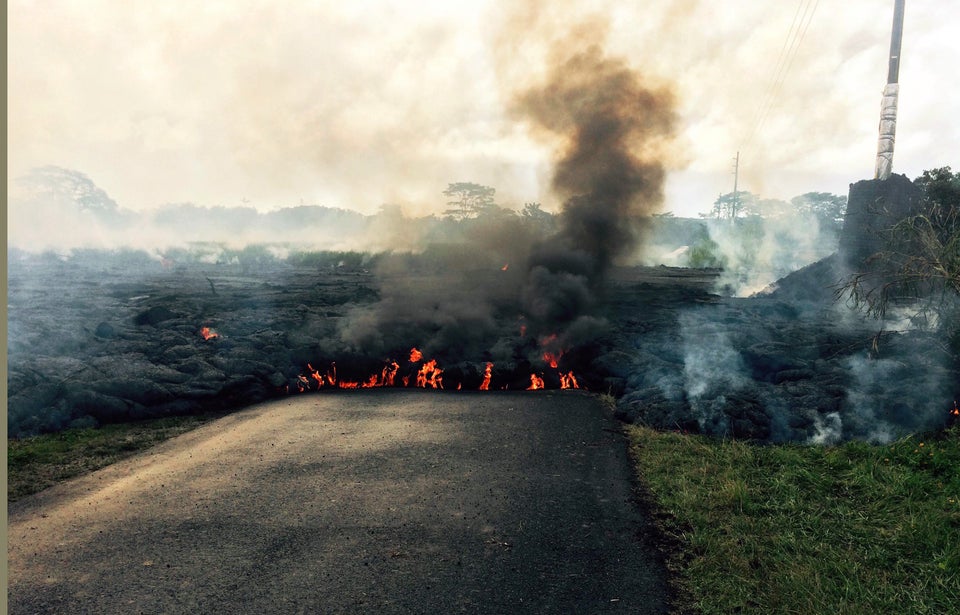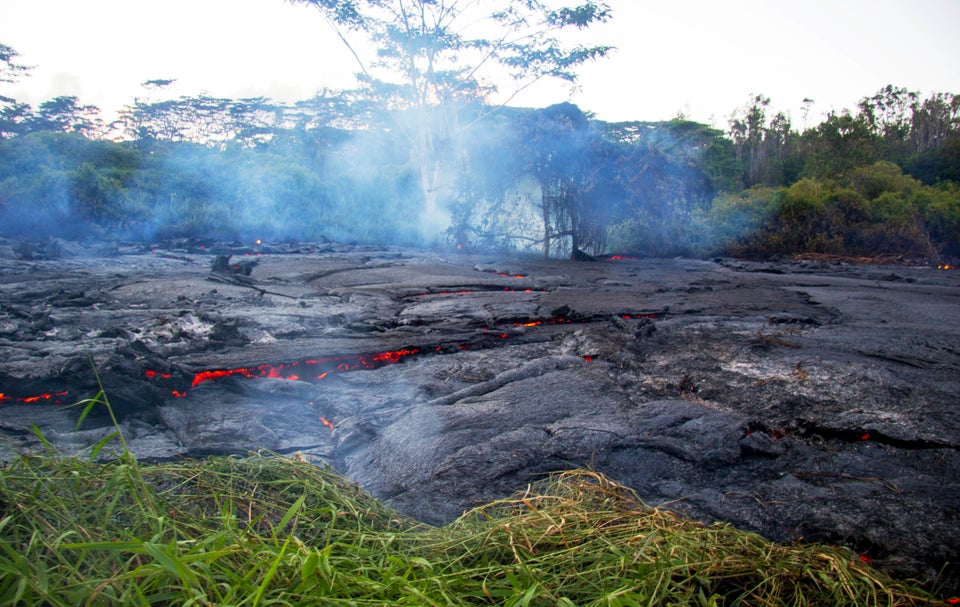(Adds details on flow location)
Nov 3 (Reuters) - U.S. President Barack Obama on Monday declared a slow-moving lava flow from the Pu'u O'o vent of the Kilauea volcano in Hawaii to be a major disaster, the White House said.
The declaration frees up federal money to help protect local communities from the lava flow, which began moving toward homes on the big island of Hawaii on June 27 and is threatening Pahoa village.
The leading edge of the flow has paused about 185 yards from Pahoa Village Road, the main thoroughfare through the town of about 800 residents at the site of an old sugar plantation.
No homes have been destroyed and no injuries have been reported.
The flow remained active as of Monday but it had not advanced since last Thursday, a County of Hawaii Civil Defense message said. The statement added that elections would go ahead on Tuesday at polling stations in the area.
The U.S. Geological Survey Hawaiian Volcano Observatory said a finger of lava on Monday was trudging downslope, parallel to a larger flow that crossed onto a residential property last week before stalling.
Kilauea has erupted continuously from its Pu'u O'o vent since 1983. The last home destroyed by lava on the Big Island was at the Royal Gardens subdivision in Kalapana in 2012.
On Sunday, two Hawaii residents were charged with trespassing after police found the man and woman snapping pictures within five feet of a slow-moving river of molten lava, police said.
The office of Congresswoman Tulsi Gabbard of Hawaii on Monday said the representative had been called up to serve as a military police captain alongside some 80 National Guard members already in the area. (Reporting by Sharon Bernstein; Additional reporting by Curtis Skinner in San Francisco and Karin Stanton in Kailua-Kona, Hawaii; Editing by Edmund Klamann)
Related
Before You Go

